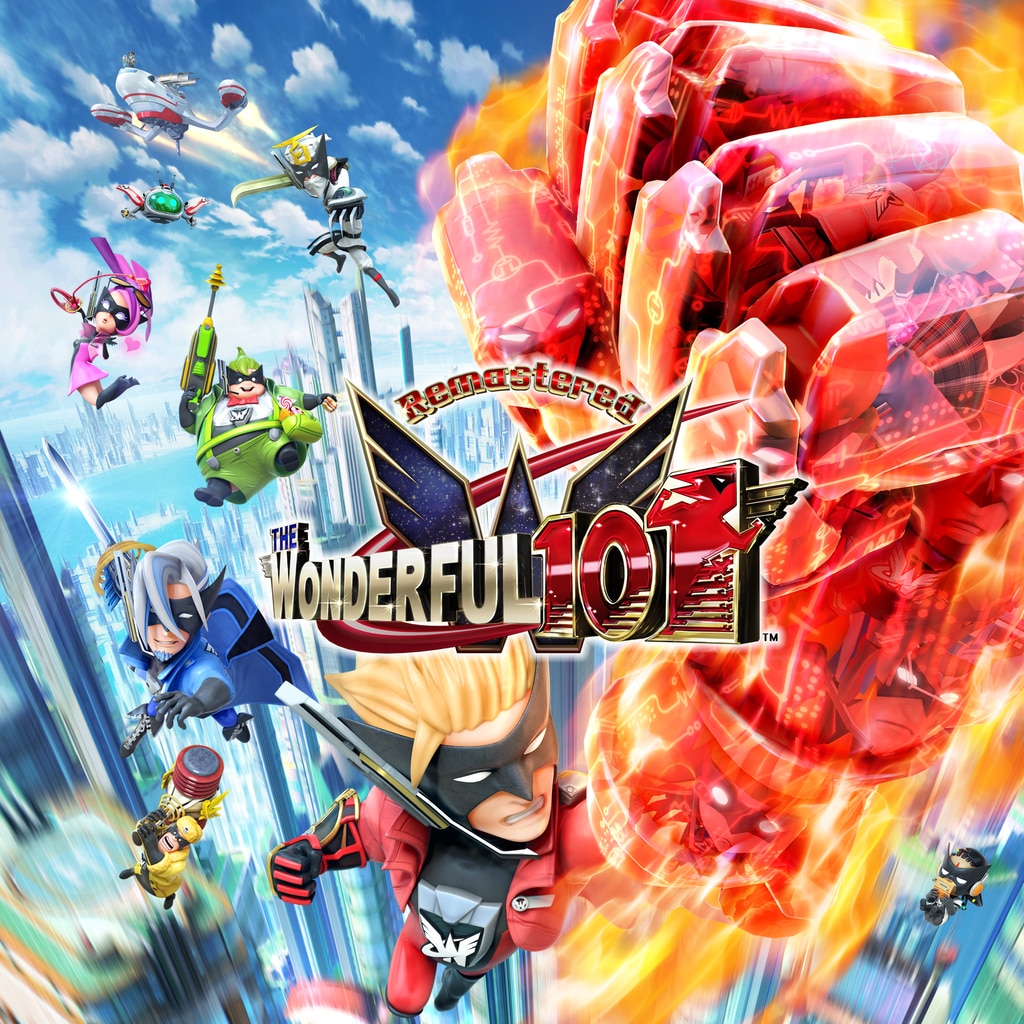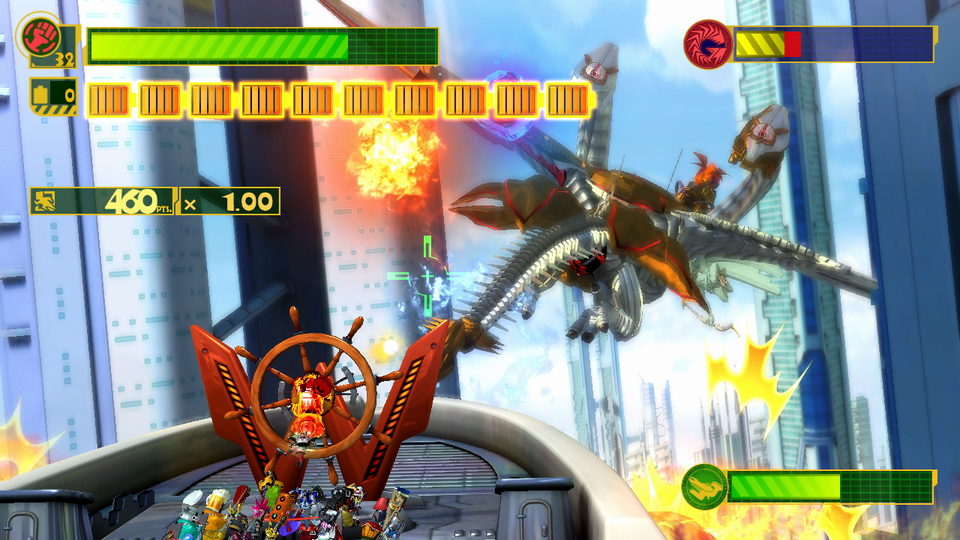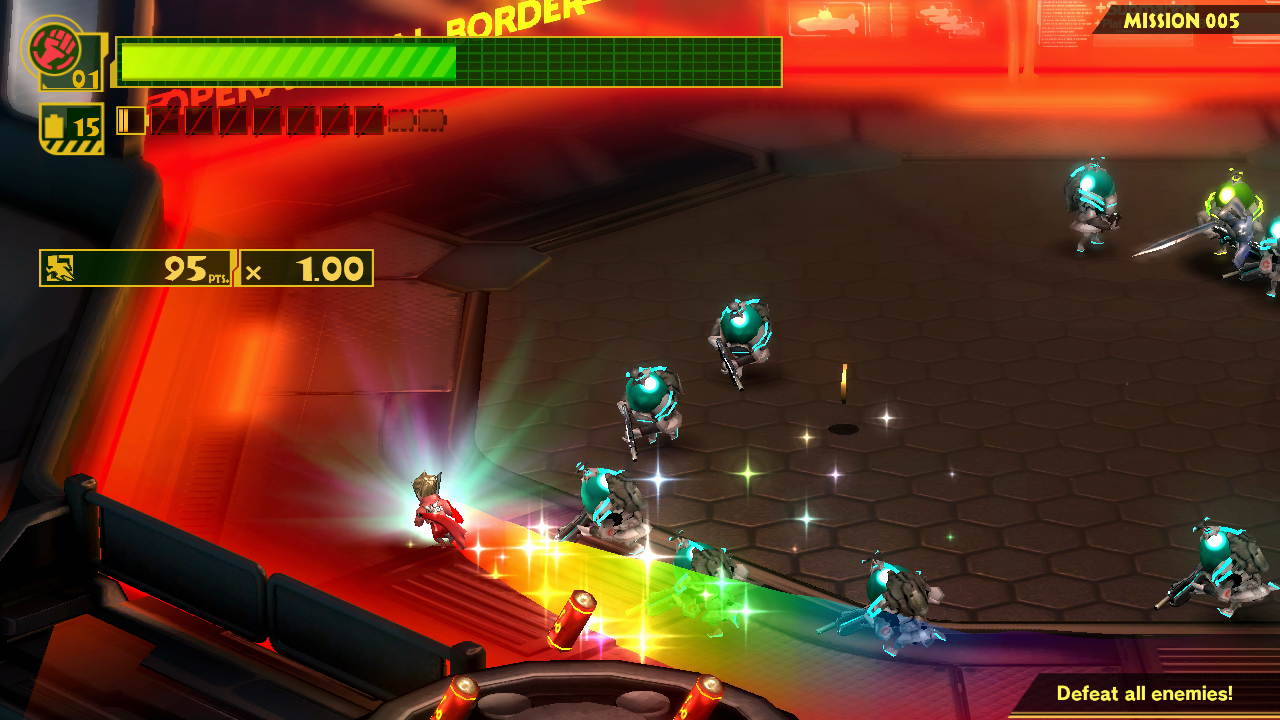This week’s readings concerned genre, and so I wanted to take the opportunity to introduce one of my favorite games to you all, seen through the lens of genre. That game is The Wonderful 101.
(Mechanics/story spoilers, but I doubt you would play this game unless you specifically set out to do so on my recommendation. I believe there is exactly 1 person in this class who has beaten this game.)

Splash image, taken from Playstation Store. In-text images are taken from IGN. Everything below the first image is a spoiler, although nothing for the second half of the game.
The Wonderful 101 is a game that is… strange to say the least. One of the relatively few major, non-first party games that were exclusive to the Wii U, it is generally overlooked. There are many reasons for this. First, the Wii U was a console that did not sell well. Second, this game was a beat’em up, or was marketed as such, a genre that is generally shied away from by the standard Nintendo audience of more child-friendly games (especially as the underpowered Wii U already filtered the audience to a more platformer-friendly crowd.) This marketing mishap was magnified by the fact that it was Sentai themed, a genre of TV show that is generally seen as being for children, including shows like Power Rangers, Kamen Rider, or Tattooed Teenage Alien Fighters from Beverly Hills. (The last one is real, I swear). This created a sort of genre mismatch, leading to a very small potential audience: essentially, teenagers in a roughly four-year range. Like me. This game, as you can imagine, did not sell well (<50,000 copies in the US, <80,000 worldwide).
There is plenty to be said of the intersection between play/mechanic based genres and narrative genres. Logically, the genres of beat’em ups (games where you fight large swarms of enemies and bring out impressive looking combo moves), and Sentai (costumed heroes fighting armies of mooks with aerobic feats, special moves, and all the other cheesy Saturday morning cartoon fare) should fit together quite well. To be honest, I think that The Wonderful 101 is pretty good at mixing these. The fundamental issue is something a little stranger: while Sentai fans might enjoy a good beat’em up, beat’em up fans aren’t so attached to Sentai. Furthermore, most video games attached to Sentai are linked to a given franchise, like Power Rangers. So while these two genres might fit together narratively and mechanically, the cultures that have developed around the genres prevent them from intersecting.
There are a lot of other strange pieces about the game’s development and publishing. The Wonderful 101 was first announced in 2012, before the Wii U’s launch, with the name Project P-100, and released with the name The Wonderful 101 the following year. Development was lead at Platinum Games by Hideki Kamiya, a rather infamous game designer who worked on Resident Evil 2, Devil May Cry, and Bayonetta. Platinum Games had a sterling reputation for making beat’em ups, but almost no cash on hand, so the game was funded almost entirely by Nintendo, and Nintendo retained ownership of the IP.
But, returning to the game itself. The Wonderful 101 is an amazing game that really shook ideas I had originally had about genre. Basic gameplay works like this: you control a squad of up to 101 members, who are each a costumed superhero. They have the ability to Unite Morph, which allows them to… uhhhh…. turn into things by squishing together.
See that hand in the front of the box art? That’s made of Wonderful Ones. They can turn into different weapons, like a gun (that launches people), a whip, a sword or a hammer, as well as tools to help you traverse obstacles, like a bridge, a glider, or even a rocket. In order to defeat enemies, you have to learn their patterns, and switch weapons at the right time to string together massive combos. At least… that’s how a lot of the game plays.

This is Operation 001-C, the third level of the game. You pilot a massive airship with a giant hand attached to a steering wheel as you chase down a three-headed King Ghidorah knockoff, interrupted by elegant quick-time events and a final showdown where you face off with the beast’s rider, Laambo.
For a moment, the game is an on-rails shooter, controlled using the same interface as the rest of the game. This level is by no means unique.
Operation 002-A, the next level, is at times a Twin-Stick shooter.
Operation 004 has spots where you control a single hero, with similar controls but a radically different gameplay experience.

And sometimes…

Sometimes, it straight up becomes Punch-Out. (A well known series of boxing games.) What The Wonderful 101 shines at is spectacle, and genre is one of its favorite tools to play around with. In order to give the appearance of overwhelming odds, it sends armies of enemies at you in classic beat’em up style. In order to show a desperate chase, it switches to an on-rails shooter to force forwards momentum that constantly takes you towards new threats. In order to make you face a colossal robot, it puts you in the shoes of Little Mac, to show that you’re up against impossible odds. When it wants you to laugh, it gives you a quick time-event to slap someone in the face as hard as possible, with a very large hand.
To conclude, genre is not necessarily prescriptive. Genre can be seen as a tool to bolster a narrative, and is therefore flexible, and can be modified according to need.
